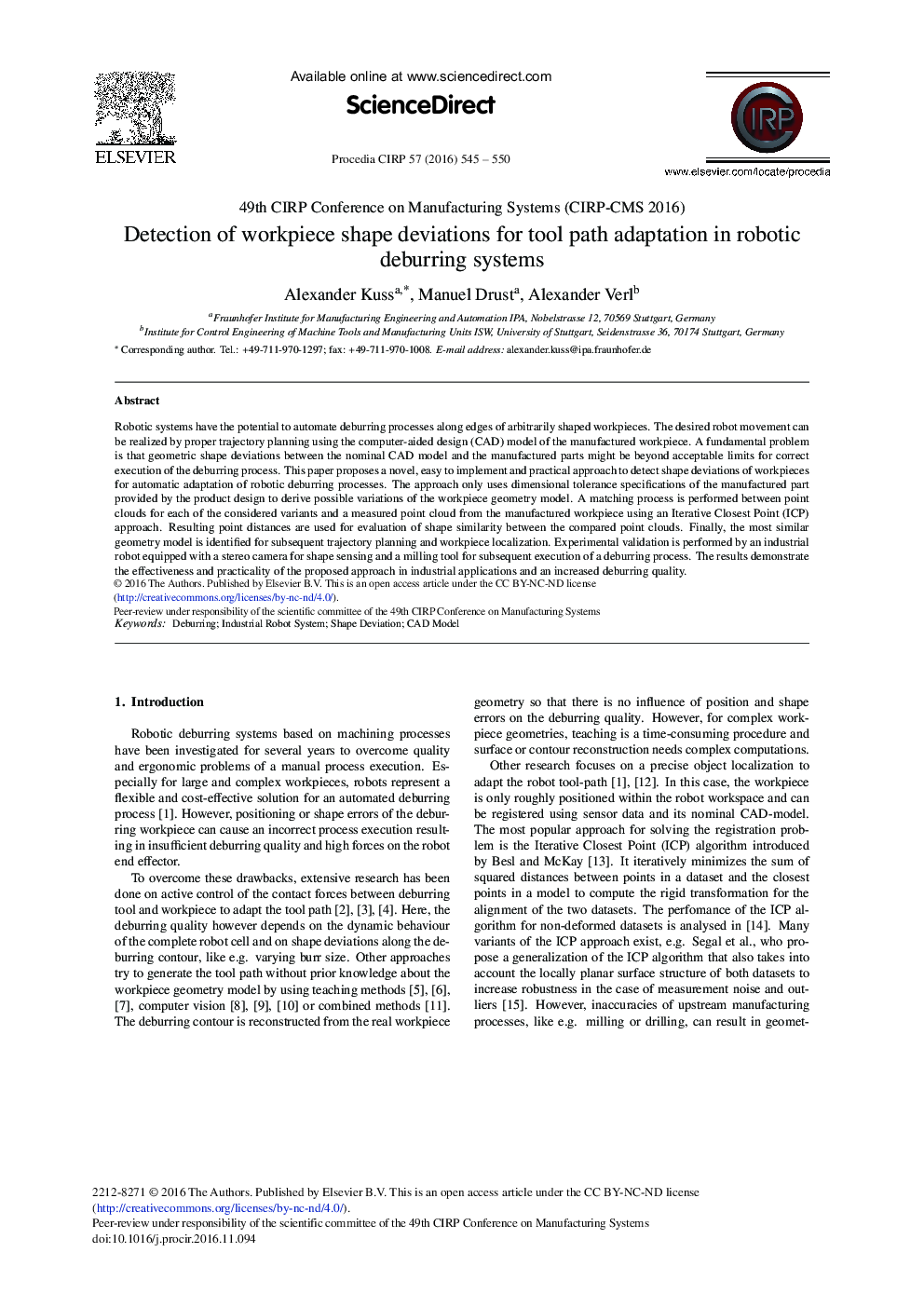| Article ID | Journal | Published Year | Pages | File Type |
|---|---|---|---|---|
| 5469877 | Procedia CIRP | 2016 | 6 Pages |
Abstract
Robotic systems have the potential to automate deburring processes along edges of arbitrarily shaped workpieces. The desired robot movement can be realized by proper trajectory planning using the computer-aided design (CAD) model of the manufactured workpiece. A fundamental problem is that geometric shape deviations between the nominal CAD model and the manufactured parts might be beyond acceptable limits for correct execution of the deburring process. This paper proposes a novel, easy to implement and practical approach to detect shape deviations of workpieces for automatic adaptation of robotic deburring processes. The approach only uses dimensional tolerance specifications of the manufactured part provided by the product design to derive possible variations of the workpiece geometry model. A matching process is performed between point clouds for each of the considered variants and a measured point cloud from the manufactured workpiece using an Iterative Closest Point (ICP) approach. Resulting point distances are used for evaluation of shape similarity between the compared point clouds. Finally, the most similar geometry model is identified for subsequent trajectory planning and workpiece localization. Experimental validation is performed by an industrial robot equipped with a stereo camera for shape sensing and a milling tool for subsequent execution of a deburring process. The results demonstrate the effectiveness and practicality of the proposed approach in industrial applications and an increased deburring quality.
Related Topics
Physical Sciences and Engineering
Engineering
Industrial and Manufacturing Engineering
Authors
Alexander Kuss, Manuel Drust, Alexander Verl,
